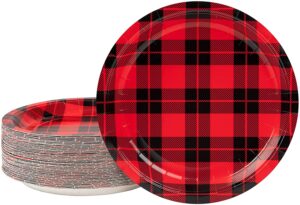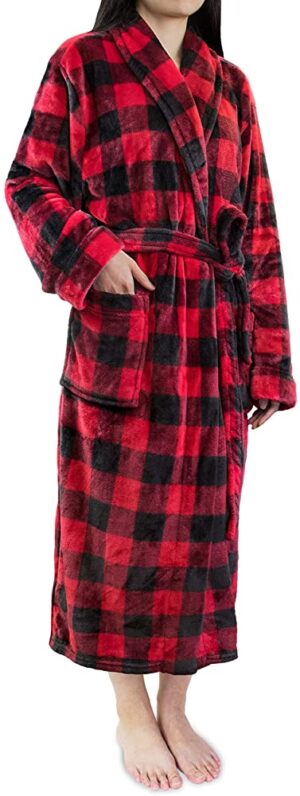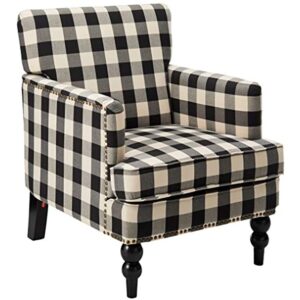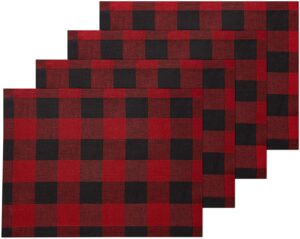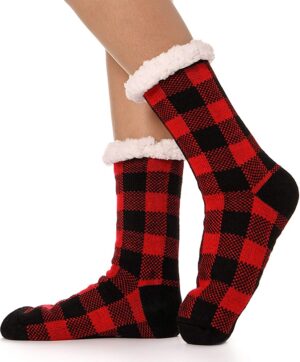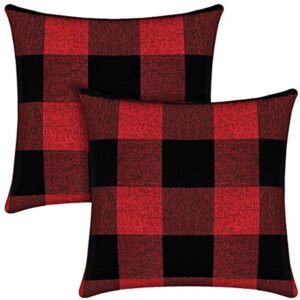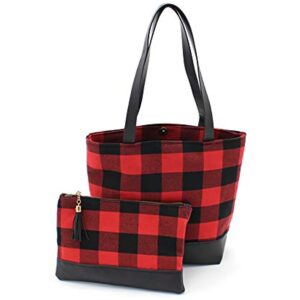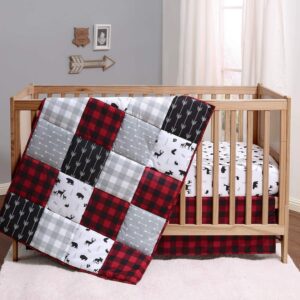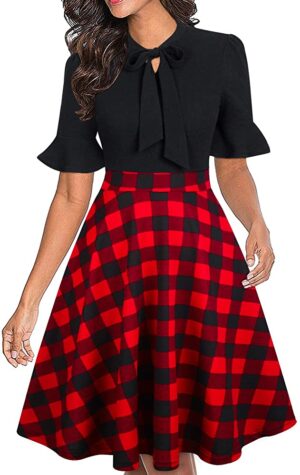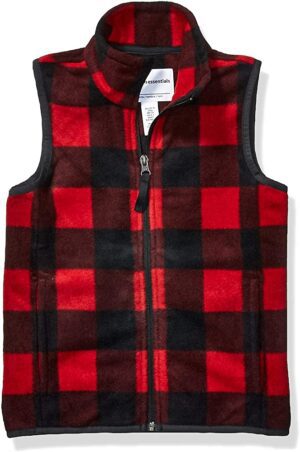Ever pondered the tales that your Christmas ornaments tell? As the festive season draws near, it’s the perfect time to explore the symbolism and hidden meanings of these holiday decorations. From their early days as simple fruit and flower decorations to today’s advanced 3D-printed ornaments, the evolution of Christmas ornaments is a story in itself. But what do these ornaments really represent?
What secrets do their beautiful colors and detailed designs hold? This article takes you on an enlightening exploration of the symbolism of Christmas ornaments, examining their historical roots, cultural relevance, and personal importance. Embark on this captivating journey with us and uncover how these ornaments not only add to the holiday cheer and beautify our homes but also hold a dear place in our hearts.
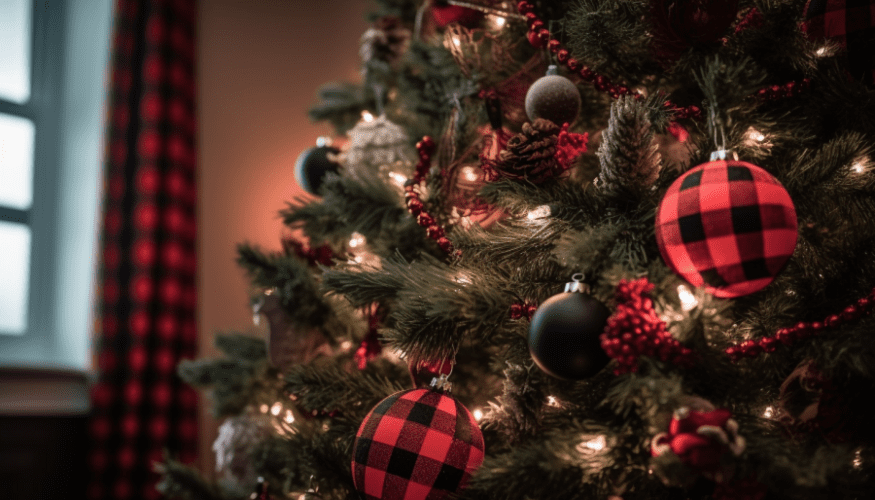
History of Christmas Ornaments
Christmas Items from the Past
In the past, decorations for Christmas were made from fruits, flowers, and candles. In the 1500s, glass ornaments started appearing in Italy. They were simple and hand-blown pieces used to decorate homes during winter. This decoration style spread to other countries and now is an important part of Christmas festivities everywhere.
Evolution of Ornaments
Glassblowers began making detailed, colorful ornaments as people wanted more festive decorations. Germans were among the first to create nutcrackers, snowmen, Santa, and religious symbols like angels and nativity scenes. To explore a wide selection of these ornaments with a unique touch, Discover Buffalo Plaid Ornaments.
Modern-Day Decorations
Nowadays, ornaments are made from different materials such as plastic, fabric, and 3D printing. Tourist attractions provide personalized ornaments with images or names printed on them, as a memento.
Christmas decorations represent the joy of the season and bring memories of past holidays spent with family. No matter how they are made, they bring love and happiness to their owners every year.
Importance of Christmas ornaments
To understand the importance of Christmas ornaments with their contribution to the festive spirit, decorative value, and symbolic significance, let’s dive deep into what Christmas ornaments really mean. These ornaments hold a special place in our hearts by bringing people closer and making their surroundings more lively during the holiday season.
Contribution to the festive spirit
Baubles tinsels, and lights – these decorations are essential for invoking the festive spirit. They lend an exceptional aura to the special occasion, intensifying it tenfold. Christmas ornaments bring life to the traditional tree while spreading cheer and delight.
These decorations give one a chance to express creativity. With technology, they can be custom-made according to individual preferences. This makes them a reflection of one’s personality. For a more personalized touch, you can Personalize your tree with Buffalo Plaid Ornaments. Besides enhancing visual aesthetics, they also increase the sentimental value of family traditions passed down through generations.
Each ornament has a deeper meaning. They symbolize memories of the past and bring joy. Just a few hours spent putting them up can bring about big smiles and stronger connections between families. This is why people often say that “Christmas isn’t just a day but a feeling”. It adds to its unique festivity, making it the most wonderful time of the year!
Decorative value
Ornaments are a must-have for Christmas decorations. These decorative pieces add charm and a lively ambiance. They bring warmth, style, and personality. Colors, shapes, textures, and designs give a holiday setting vibrancy.
Their versatility is special – from traditional to edgy. Hang them on trees or wreaths or use them as centerpieces. Ornaments not only beautify but also hold sentimental value. They offer a personal touch, bringing families and friends together – creating fond memories and unbroken bonds.
Ornaments evoke positive emotions. Their presence creates joy – making them essential for unforgettable celebrations! They capture attention with their brightness and vividness, stirring up festive feelings.
Symbolic significance
Christmas ornaments bring with them great symbolic value. They’re not just decorations, but carry meanings and traditions that have been passed down from generation to generation. For instance, a green tree symbolizes life, while a star-topper signifies the Star of Bethlehem. Angels stand for the ones who announced Jesus’ birth.
These ornaments also denote joy, love, and hope during the festive season. Decorating brings families together and creates a cozy atmosphere. It’s a way to express creativity and personality through unique choices.
Moreover, some ornaments have historical significance. Handmade wooden ornaments or family heirlooms carry memories and feelings of past Christmases. These nostalgic feelings add depth to modern-day celebrations.
The symbolism of Christmas ornaments
To gain a comprehensive understanding of the symbolism of Christmas ornaments, delve into the following sub-sections: Religious symbolism, Cultural symbolism, and Personal symbolism. Each subsection will reveal unique perspectives on why Christmas ornaments hold a deep significance during the holiday season.
Religious symbolism
Christmas is celebrated all around the world and many decorations hold religious symbolism. Angels, stars, and nativity scenes all represent Christian stories from the Bible. These decorations bring hope, peace, and salvation.
The Christmas tree is a unique ornament with special meaning. The evergreen symbolizes everlasting life. It reminds us of Christ’s sacrifice and how it grants us eternal life.
The Christmas wreath is another significant decoration. Made from evergreens, it stands for eternity and God’s endless love for humanity. Its red berries represent Christ’s blood.
These decorations demonstrate faith and spirituality during a joyous celebration. They bring traditional stories of faith to Christmas, making it even more meaningful.
Cultural symbolism
Ornaments used during Christmas convey a special meaning that has been kept alive in cultures all over the world. These decorations represent various aspects that are important to each culture. If you are curious to explore more ornaments representing different cultural aspects, click here for festive ornaments. For instance, objects like the Christmas tree, wreaths, and candles are used for religious purposes in Christianity. They symbolize hope, love, and peace. Other cultures use decorative elements such as the zodiac sign or pineapple to signify good luck and fertility.
In certain cultures, ornamental colors have specific meanings. In China, red stands for joy and good fortune. Green, on the other hand, means growth and longevity. Indigenous Africans use bold patterns with colors like black and yellow to represent their place in the community.
Each culture also uses different materials to make decorations. Inuit communities use animal bones and skins. Scandinavians craft intricate designs from straw. Then there are people who choose materials to signify long-standing cultural significance, like gold or silver.
It is amazing how many cultures keep this tradition of decorating for Christmas and using ornaments that carry symbols of their heritage. This emphasizes the importance of maintaining cultural traditions in an ever-changing world full of homogeneity.
Personal symbolism
Individuals give Christmas ornaments a special significance. They recall memories, traditions, and emotions of past times spent with family and friends. Personal symbolism can be anything from a treasured heirloom to a child’s homemade craft. Each ornament is a reminder of holidays gone by, bringing feelings of comfort and nostalgia to the present. This makes each tree unique and meaningful.
More than just attachment to the ornament itself, decorating the tree can carry personal symbolism. It could be a sign of coming together as a family, displaying creativity, or showing religious beliefs. The tree itself may symbolize love, hope, and giving.
Certain ornaments hold cultural or religious symbolism, too. For example, angels can represent protection and guidance in Christianity, while dreidels symbolize miracles and faith in Judaism. Even so, these symbols can have a personal significance too, depending on the individual’s experiences and views.
Christmas ornaments are physical representations of intangible experiences and emotions associated with the holiday season. Personal symbolism allows each person to connect with decorations on a deeper level, making them truly special to their own holiday traditions.
Popular Christmas Ornaments and their meanings
To delve deeper into the meaning behind popular Christmas ornaments and their significance during the festive season, explore this section. Discover the symbolism behind Christmas trees, wreaths, holly and mistletoe, angels, stars, bells, candy canes, Nativity scenes, and Santa Claus ornaments.
Christmas trees
Christmas Trees have been a part of Christmas festivity since the 16th century. They are conical, evergreen trees that stand for durability and quality. Decorations on them come in all shapes and sizes – from glass baubles to tinsel and garlands. Candles lit these trees during the Victorian era; now, LED lights do the job. The star at the top symbolizes hope, guidance, and celestial bodies. Martin Luther is said to have started wrapping lights around his tree to show stars twinkling in heaven.
In some countries, locals have adapted their own traditions. For example, in Scandinavia and Mexico, families make rustic cardboard cacti with candles; others hang mangoes on shelves or windows with ornaments made from natural fibers like coconut husks.
Wreaths
Wreaths are amazing ornaments. They have no beginning and no end, representing eternity. Plus, they signify the everlasting life and resurrection of Christ. Over Christmas time, they invoke feelings of peace, hope, and joy.
Their circular shape represents the cycle of life, death, regeneration, and renewal. In modern days, there are many varieties – Advent, Boxwood, Pine Cones, and more. They can also be used to celebrate other events, like weddings, birthdays, or graduations. The meaning behind each type of wreath varies depending on the occasion, making them even more fascinating!
Holly and mistletoe
Holly and Mistletoe are classic Christmas symbols that come with deep cultural and religious meanings.
- The evergreen Holly is the sign of eternity, immortality, and strength.
- The red berries symbolize the blood of Christ. The leaves signify his crown of thorns.
- Mistletoe, a type of parasitic plant, represents peace and goodwill throughout the holiday season.
Interestingly, in the old days, it was thought to protect from evil spirits. Now, it is often used to get couples to kiss each other.
Angels
These celestial creatures are linked to Christmas. They are graceful and winged, symbolic of hope, faith, and compassion. In Christianity, they proclaim the birth of Jesus to shepherds and celebrate his coming. They also direct the wise men to Bethlehem.
Angels come in various forms with varied meanings. The cherub stands for innocence and purity. The archangel is powerful and courageous. The guardian angel looks after loved ones and brings solace.
The angel has a place beyond religion. They are messengers and guardians watching us from above. They blend into Christmas decor, conveying messages of peace and positivity. They create a warm atmosphere during Christmas and don’t diminish the festive celebration.
Stars
These glimmering heavenly bodies are an iconic Christmas decoration! Stars, of varying materials and colors, represent the star that led the Wise Men to Bethlehem. This symbolizes hope, faith, and promise. Placing a star atop a Christmas tree is deeply significant, as it represents the Star of Bethlehem that guided the way to Jesus’ birthplace. The twinkling nature of these stars elevates the joyous moods of those gathered; reminding us of love, light, and the splendor of the season.
Bells
These melodious metal circles have been a key part of Christmas decorations for centuries. They make a sweet jingle and bring joy to people’s hearts. Bells stand for hope, peace, and kindness to all. They are said to guard homes from bad luck and evil spirits.
Bells have huge spiritual meanings in numerous cultures. In Christianity, they symbolize the birth of Jesus and remind us of his teachings. Churches use bells to start devotionals and religious events.
In some places, bells are rung on Christmas Eve to welcome Santa and show him the way. In Japan, ringing bells 108 times on New Year’s Eve is a custom to get rid of bad habits.
Bells go beyond Christmas. They remind us that there is hope even in dark times. The sound of bells carries a message of love and friendship that unites people across different cultures and religions.
Candy canes
The ‘Sweetest Story Ever Told’ – candy canes! They’ve been around since the 17th century, originating in Germany.
Six facts about their symbolism:
| – The crook-like shape symbolizes shepherds who visited the newborn King. |
| – White = purity and innocence. Red stripes = Jesus’ blood. |
| – A candy maker added the ‘hook’ to create the iconic look. |
| – Nowadays, candy canes come in loads of flavors and colors. Plus, we use them as garnishes too! |
| – At Christmas, people exchange candy canes as gifts – spreading joy! |
| – They make great tree decorations too. |
Surprise – some churches use huge plastic or cardboard candy canes for Christmas decorations!
Nativity scenes
Nativity scenes, depicting the holy birth of Jesus Christ, are a popular Christmas decoration. Mary, Joseph, and the baby Jesus usually appear in a manger, surrounded by animals and shepherds. Plus, three wise men often follow the Star of Bethlehem to bring gifts to the newborn king. These decorations symbolize the religious significance of the holiday season. They remind us of our Savior’s miraculous birth and the Christmas story’s essential message – love, hope, and faith.
Families love crafting custom-made Nativity scenes to fit their unique design preferences. These come in various sizes and variations – from individual figurines to enormous displays outdoors. Hand-carved wooden Nativity sets are among the most popular type among collectors. Enjoy their spiritual relevance while celebrating with loved ones – decorate your home with these enchanting displays this Christmas season!
Santa Claus ornaments
Santa Claus Decorations are a beloved symbol of the Christmas season. They hold great meaning. Here are five facts:
- Santa Claus, also known as Saint Nicholas or Kris Kringle, was based on a fourth-century bishop from Myra in modern-day Turkey.
- Santa Claus ornaments usually show him in his red suit, white beard, hat, and black boots.
- Some ornaments reflect his Nordic roots with Scandinavian-style designs.
- Others show him engaging in holiday activities like baking cookies with Mrs. Claus or feeding reindeer.
- Santa Claus figures can also be part of other decorations such as wreaths and tree toppers.
Unique Santa Claus decorations come with special touches. Some have LED lights and play tunes like “Jingle Bells”. Whatever form they take, they remain a symbol of the merry spirit of Yuletide celebrations.
How to choose meaningful Christmas ornaments
To choose meaningful Christmas ornaments, focus on personal taste, family tradition, and symbolic value. These elements guide your choices and make ornaments special. Harnessing your unique preferences and memories allows you to craft a holiday aesthetic that is both beautiful and meaningful.
Personal taste
Your individual taste and preferences are key when picking Christmas decorations. Your style and choices reflect your identity and make you stand out. Your choice should reflect your personality, interests, culture, values, and upbringing. Don’t just pick what is trendy; choose ornaments that mean something to you.
Think about the material, colors, shape, pattern, texture, and design of your chosen ornament. Make sure it looks good and has a special meaning. You can also pick symbols from special memories or important life events – like a birthstone or a portrait of someone you love.
Remember to think beyond the ornament’s visual beauty. Every decoration has a story to tell. Look into the details of each ornament before you make your final decision.
Family tradition
Retaining the familial heritage of Christmas ornaments. The importance of inherited family traditions is known. Regarding tree ornaments, personalized and cherished decorations remind us of past Christmases. Each decoration has its own special history.
Many reasons make people follow traditions. It is mostly to keep memories and relationships with loved ones alive. It is better to add new ornaments with meaning instead of buying non-personalized trinkets each year.
When picking the right ornament for your Christmas tree, think about what it represents or means to you and your family. Sharing stories from past holidays while decorating helps children understand their cultural past and creates family unity during this season of love, giving, and gratitude.
Symbolic value
Christmas ornaments have a deeper meaning. They symbolize something special, not just decorations. When choosing ornaments, think of how they represent your values and beliefs. They may be linked to religious or spiritual concepts, cultural traditions, or family memories.
Popular symbols on ornaments include stars, angels, and nativity scenes (religious). Snowflakes and reindeer (secular). Personalized ornaments make great gifts, like a baby’s first Christmas, or a couple’s first Christmas together.
Be authentic when picking meaningful ornaments. Quality usually has a cost. Making homemade ornaments with kids or partners also creates a special memory. Each ornament should have a personal connection to be part of holiday celebrations for years.
Conclusion: The value of Christmas ornaments in celebrating the holiday season
Christmas ornaments are a beloved tradition. They come in all shapes and sizes, from snowflakes to angels. Each holds a special meaning – a symbol of cherished memories. The presence of these decorations brings warmth and joy unmatched by anything else.
These ornaments have a long history. It began centuries ago with Germanic tribes who used evergreen trees to signify everlasting life. As Christianity spread, they adopted the symbols for their celebrations. This led to the modern tradition of decorating Christmas trees. This practice has become popular worldwide, a sign of unity and love.
Certain ornaments represent specific meanings. Stars bring hope and guidance. Wreaths symbolize eternal life and faith. Angels remind us of Jesus’s birth. Reindeer signify new beginnings. Santa Claus figurines evoke childlike wonder. All of these bring joy to the holiday season.
Frequently Asked Questions
1. What do Christmas ornaments symbolize?
Christmas ornaments usually symbolize myths, customs, and traditions related to Christmas. They represent joy, beauty, and happiness, and sometimes hold personal meaning for the owners.
2. What is the history behind Christmas ornaments?
The history of Christmas ornaments goes way back to the ancient civilization of Rome when people would decorate their homes with green plants and light candles to honor the god Saturn. Later, Christians began to adopt this tradition, adding religious ornaments to the decorations.
3. What are some popular Christmas ornaments and their meaning?
The most popular Christmas ornaments include Christmas trees, wreaths, angels, stars, and bells. These ornaments symbolize Christmas traditions and represent different meanings such as joy, hope, peace, and love.
4. How do I choose the right Christmas ornaments for my home?
The right Christmas ornaments for your home depend on your personal preferences and style. You may choose ornaments that match your home’s color scheme, represent your culture or religion, or remind you of special memories or traditions.
5. What is the significance of the Christmas tree as a Christmas ornament?
The Christmas tree is one of the most iconic Christmas ornaments, symbolizing the everlasting life that Jesus Christ gave to mankind. The tree also represents hope, rebirth, and renewal.
6. Can Christmas ornaments be used for other holidays or occasions?
Yes, some Christmas ornaments can be used for other holidays or occasions. For example, ornaments shaped like hearts or flowers can be used for Valentine’s Day or Mother’s Day, respectively.



